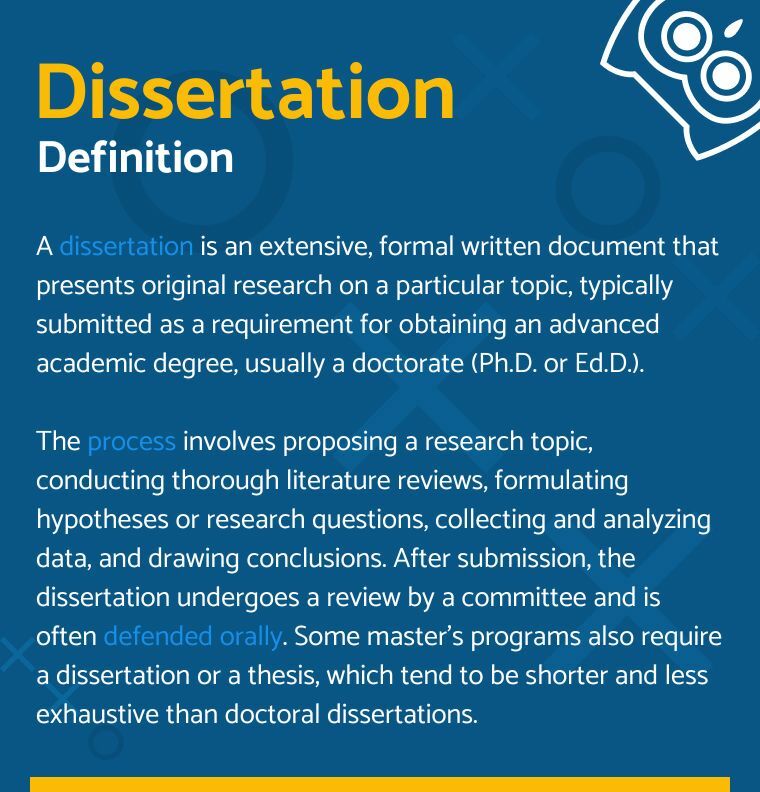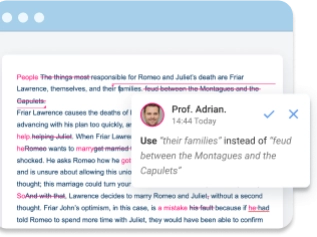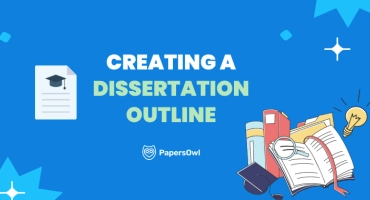Writing a Perfect Dissertation or Thesis: Step-by-Step Guide
Table of contents
- 1 What is a Dissertation?
- 2 How long should a dissertation be?
- 3 Choosing a Dissertation Topic
- 4 Planning and Research
- 5 The Dissertation Proposal
- 6 Organizing Your Ideas With Proper Outline
- 7 Create a Clear and Coherent Argument throughout the Dissertation
- 8 Step-by-Step Dissertation Structure
- 9 Citations and Referencing in a Dissertation Process
- 10 Strategies for Overcoming Writer’s Block and Managing Stress With Your Research Question
- 11 Look for Dissertation Examples
- 12 You’re Now Ready for Top Dissertation Writing!
Writing a dissertation is something every student needs to undertake. This is the culmination of one’s academic program. It requires a careful understanding of how to write a dissertation properly. There’s a lot of brainstorming on your dissertation or thesis, including your final grade and potential future career prospects.
Even though the structure of your dissertation writing depends on your field and level of study, the basic theoretical framework remains similar. The following guide will cover all the key concepts of a Master’s or PhD work. At the end, you’ll learn:
- How do you choose your topic, and what are the preliminary steps for planning and brainstorming?
- Strategies to organize your ideas and coherently expose them in your structure.
- What are your paper’s main elements, research aims, and points of composing and editing?
- Tips on overcoming difficulties such as getting stuck or being under pressure.
Let’s review everything you must know about writing a dissertation. If thinking about this process makes you nauseous, it will change when you’re done reading!
What is a Dissertation?

A dissertation is a comprehensive paper based on your research question or topic. This document showcases your knowledge and understanding of your academic field. It requires graduate students to assess a research subject critically.
Many students get confused about thesis versus dissertation. They get lost trying to figure out the difference. Most of the time, they refer to the same thing. In the UK, a thesis is required to get a PhD, while a dissertation is written when completing a Bachelor’s or Master’s program. In the US, the opposite holds a true statement. Students write Master’s thesis and Ph.D. dissertations. That’s the primary difference to note between these research projects.
How long should a dissertation be?
A dissertation’s length varies based on the subject and academic institution. Typically, a Master’s dissertation ranges from 10,000 to 50,000 words. A Ph.D. dissertation can be 50,000 to 100,000 words or more. However, the emphasis should always be on the quality of content. A student must meet the research objectives rather than word count alone.
Choosing a Dissertation Topic
There are many ideas for a dissertation, and finding one that stands out could be challenging. The same is true for what you are passionate about. The first step to any research paper is to develop a question or set of questions you wish to answer. The research question must be specific and clear, just as the writing process. It should also be something significant that the readers can directly relate to and understand.
It is important in a dissertation to make sense to your audience and captivate them. Unlike typical essay writing, academic work based on personal research should also be about your interests. Always try to come up with research questions that intrigue you. That way, learning how to write a dissertation will be easier and more enjoyable.
Tip: Here, we have collected the best dissertation topics in Architecture. These dissertations and relevant topics reflect the latest trends, challenges, and innovations in the architectural realm, inspiring students to conduct impactful research.
Planning and Research
Once you’ve decided on a topic, it’s time to start researching. The research process is divided into two main steps. Preliminary research and principal research. The former is a basic understanding of your dissertation research question. It helps you narrow down sub-topics and find relevant literature and sources for detailed research. This is often a tedious process so it may be broken down into:
- Research journal articles and academic papers carefully. Note all important points you come across.
- Create a rough draft of your thesis, adding everything relevant. This will help gather all the data regarding your dissertation research proposal.
These two initial steps are crucial for any academic writing. Having information in this manner will help you write your dissertation outline more effectively later on.
Once you conduct preliminary research, it’ll be time to move on to a more in-depth study. This involves carefully analyzing all your sources. You must discover everything possible regarding your research subject.
After recognizing every research gap in the dissertation subject, you’ll want to review both primary and secondary sources. The former relates to materials that relate directly to an event. The latter involves secondhand accounts, such as books and analyses.
The Dissertation Proposal
For both Master’s and Doctoral programs, your research project requires a proposal to be submitted before you actually start working. This fairly comprehensive formal document goes over the research matters you wish to work on. Your proposal should explain the reason for selecting your research questions. It must involve your study aims and how you plan to conduct your research. All this must be something that your faculty members approve of. Therefore, it’s good to spend some time and get it done correctly.
After you have the draft, it must be submitted to the committee members for review. They’ll check how you write a dissertation and give pointers wherever applicable. It may improve your research design. This part of the dissertation process sometimes takes a few weeks but is well worth it. This way, you’ll know if there’s a research question gap or source material you need to rethink.
Organizing Your Ideas With Proper Outline
An outline isn’t a part of your dissertation defense, but it’s an important tool to assist in your own work. It involves structuring your research from the get-go and helps organize everything you’ve collected thus far.
You can rearrange different topics and evidence before actually writing about anything. There are many ways to do so. Structuring an outline is arguably among the best solutions. This is where you get to figure out your chapter titles and the overall flow of your text.
Your outline should include everything from the location of any quotes or interview transcripts to the methodology and results of your research. All this is great not only for making your writing job easier. Likewise, it is also for drawing connections between points you may not think about otherwise.
Tip: Look for Dissertation Outline Examples in Our Guide!
TIP: Writing and Editing in Academic Writing
Once you’ve created an outline and structured your research, it’s time to start writing. Know the required word count for sections beforehand. It makes determining how much you should write under each heading easier.
Create a Clear and Coherent Argument throughout the Dissertation
A dissertation is unlike public speaking, where you can go on certain tangents and return to your point. This is a piece of text that’s very long and quite arduous to read for many. Whenever you’re working on research, it’s vital to maintain your tone of voice as well as your argument. This is the part where most students struggle and why they ask for coursework writing help to complete their graduate education task.
It’s the writer’s job to present their research coherently. There shouldn’t be parts that are contradictory to your primary topic. One tip is to keep questioning existing research. This leads to a compelling text and adds more weight to your own dissertation topics.
Step-by-Step Dissertation Structure
Title Page
The title page is where you explain your research topic in a few words. This should be related to your work and give the readers an idea of what they will read. The formatting of this page depends on your faculty and professors. It’s usually in APA, MLA, or Chicago style. In most cases, you’ll have to write your title, your name, your supervisor’s name, the name of your program, and your university’s name.
Acknowledgment
You may include This optional page if you wish to thank someone who has helped with your work. This includes teachers and supervisors, people who gave their time to answer your questions, etc. Keep this one as concise and formal as possible.
Abstract
This part of the dissertation summarizes your paper or research proposal. It is where you concisely state all your key points. It outlines all the major points of your research, giving people a deeper insight into your work. This is where you must hook readers.
Give them enough information about your research topic to make them want to read more. Regarding requirements, a
dissertation abstract is usually only one paragraph long, ranging from 250 to 500 words. Anything longer, and it becomes a whole chapter of its own.
Some students get confused about abstracts and executive summaries. While the two may seem very similar, they’re not quite the same. Unlike an abstract, which is a brief overview, an executive summary is more detailed. It offers insights into the research’s significance, methodology, results, and implications.
Introduction
The first proper section of your dissertation is the introduction chapter. This goes into further detail of your paper than the abstract. As you conduct research, giving readers some
background information on your topic helps them understand it better. When writing a research paper introduction, you must
state your thesis statement and briefly highlight how your paper will discuss it.
A typical way of crafting this section is to summarize each chapter of your dissertation structure. You should also review your writing process and tell the readers about your research methodology. Talking about existing research on the topic is important to help define where your work fits in. It also inspires future research for potential readers.
When embarking on a dissertation, one of the pivotal decisions is including a hypothesis. Whether or not a dissertation should include a hypothesis depends on the type of research being conducted. In quantitative studies, common in fields like psychology and natural sciences, hypotheses—testable predictions based on theory or prior research—are standard. Conversely, qualitative research, typical in anthropology or certain sociology sectors, might prioritize research questions or objectives over specific hypotheses. The study might feature hypotheses and research questions for mixed-methods research, which blends both approaches. Always consult departmental guidelines or your supervisor when determining the structure of your dissertation.
Literature Review
Analyzing existing literature on your topic is perhaps the most important part of your work. The literature review is a discussion chapter that requires going over your primary and secondary sources. Based on an academic discipline, it is evaluating the relevant information you’ve gathered from them.
You may also point out flaws and gaps in this information to strengthen your lit review for the dissertation. The research gap you find is crucial for a literature review. This pertains to portions of a topic that haven’t been explored properly yet. Your primary concern should be filling these gaps with your own research proposal.
Methodology
When researching how to write a dissertation, students often worry about the methodology section. The methodology chapter describes how you’ve collected and analyzed information. It includes any computer programs and tools. You must provide a detailed thesis statement. It is where you critically evaluate existing knowledge based on key theories and formatting guidelines provided.
The methodology chapter describes a detailed account of the research approach. This is where you offer insights into how data was collected and analyzed. It starts with a clear description of the chosen research design. Be it qualitative, quantitative, or mixed methods, and the underlying rationale for that choice. An in-depth explanation of the data collection methods follows this. It may involve work through surveys, interviews, observations, or other means, as well as the criteria used for selecting the sample. If you study computer science, think about what valuable contribution you can make with examples.
The chapter also covers the procedures used for data analysis, emphasizing measures taken to ensure validity and reliability. Ethical considerations play a pivotal role in a successful dissertation, encompassing issues like participant consent and data protection. Lastly, addressing any limitations or challenges encountered during the research process is crucial. By meticulously outlining these elements, the methodology chapter legitimizes the study and ensures its replicability. It offers other researchers a roadmap to understand and potentially emulate the process.
Explaining this is crucial, as it gives your work credibility. It also ensures its replicability, offering other researchers a roadmap to understand and potentially emulate the process. That is why approaching any doctoral dissertation writing service you take help from has a special impact on this part.
Results
If the introduction chapter is the start of your text, the results chapter is the culmination. It is like a thesis statement. This is where you present all your data and original research analysis. What you write here must be something you can stand by in your dissertation defense.
The way you present your findings is important too. You should include individual findings and carefully analyze them if you’re working on an empirical dissertation. In the case of a non-empirical dissertation, you may structure your results based on themes and trends.
Be sure to proofread your text for spelling mistakes and grammatical errors. Seek feedback at various stages. Getting feedback from a professor is always a good idea before formulating the final results and coming up with the main argument.
Discussion
The discussion section of your dissertation discusses the results you’ve achieved. You may ask how the data fits into the larger research theme. By offering valuable feedback, you may talk about how it changes how a problem is perceived. Remember to include what it means overall for the topic.
Write this section as transparently as possible for the final submission. Talk about any surprises you found along the way and any concerns regarding the findings. Seek feedback and allocate enough writing time. Critical thinking is a major part of academic writing! Therefore, inviting your readers to discuss your work openly is encouraged.
Conclusion
The conclusion must tie all your text together and bring it to a close. Just as the introduction is important, so are the concluding remarks. It should not talk about any new research or findings. Keep up with a method that can reiterate the core concepts of your dissertation. It must also reevaluate the statement or question you’ve worked on.
The conclusion of any paper is the last thing people usually read. This should separate your work from other dissertations and leave a lasting impression on your readers. Be sure to talk about the final results here briefly. Stress why your dissertation was conducted and its importance to the subject.
Bibliography
The bibliography of a dissertation lists all relevant citations of sources you’ve analyzed in your research process. This is the part that even an avid essay writer usually shies away from, but it’s not that difficult. Simply follow your university’s format and write down every website, paper, book, etc. that you’ve studied.
Glossary, List of Abbreviations, Figures, and Tables
To make your dissertation more understandable, providing visual elements and supporting information is crucial. The glossary refers to a list of all technical terms that should be defined for readers. Many departments have terminologies that the general public isn’t familiar with, so defending them is important. A list of abbreviations similarly describes common terms. Both these may be placed at the start of your paper.
You’ll inevitably use figures and tables when you write a dissertation. Figures may include images, graphs, and charts. All these must be listed at the beginning of your document as this is a requirement of all comprehensive exams. Label them along with their page numbers to make it easier to find them.
Appendices
Appendices should be placed at the end of your dissertation text and include any helpful materials that may further enhance your study. These are non-essential pieces of information that are still connected to the topic. Examples include maps, transcripts of interviews, etc.
Citations and Referencing in a Dissertation Process
No matter what you write, you must give credit when using other people’s thoughts or research. If you don’t do that, your work will be accused of plagiarism. This is why avoiding plagiarism and receiving feedback on works cited is essential. This is a solid way of ruining your dissertation and losing your grades. To avoid this, you may take notes of your sources on paper to create a record of your references. A reference list is crucial to provide evidence regarding your claims.
How you cite a resource depends on which format you’ve been asked to follow. In certain cases, a double space must be used. If you are in doubt, use a relevant step-by-step guide on formatting. The most common ones include the APA, MLA, and Chicago styles. Each has its own unique rules. Still, they essentially require you to mention the name of the source material (book, article, paper), the writer/s, and where it is published. You must provide the date of publishing and the date you last accessed it as an online source.
This does become a tiring process, especially when you have to write a very long dissertation paper. Luckily, many tools and various citations generator exist to do this for you. You may simply add a link to your source, and such services will give you a properly formatted citation to include in your paper. But, to make sure that your dissertation is absolutely error-free, using professional dissertation editing services like PaperTrue is always the best option. They provide end-to-end assistance to make your paper flawless.
Strategies for Overcoming Writer’s Block and Managing Stress With Your Research Question
Coming up with a good topic, conducting a literature review, and crafting a great dissertation often depends on how well you manage stress. If you are working toward a master’s degree, some additional background information must be added. It is true for dissertations that go deeper than an overall argument. Knowing that this task may shape your entire career definitely causes anxiety, so it’s vital to practice self-care and ask for help when needed.
You can easily ask a professional to learn how to write my dissertation and guide them through the process. If you’re finding it difficult to focus on your dissertation and affecting other classes, it may help to ask someone else to write some of it for you. This would give you peace of mind to focus on other aspects of your final exam, leading to a better overall result.
Look for Dissertation Examples
To help yourself write a dissertation, check out other dissertation examples before starting. This is an effective way to learn how things like literature review work and how an interesting dissertation proposal plan is made. They’ll also show you how to cite resources and correctly label images. Make this an integral part of your process, and you’ll find it much easier to craft your dissertation.

You’re Now Ready for Top Dissertation Writing!
With all the tips in this comprehensive guide, you now know how to write an outstanding dissertation. Just hearing the word ‘dissertation’ often causes anxiety among students, but it’s not that difficult once you know how to go about it.
Start with choosing a topic that you find intriguing. Next, gather your data in a structured manner and conduct a thorough literature review. Once ready, analyze everything carefully and formulate your results. That’s essentially all you must do for a good dissertation project. Be sure to follow the requirements regarding citations and formatting, and a high grade is all but guaranteed!







